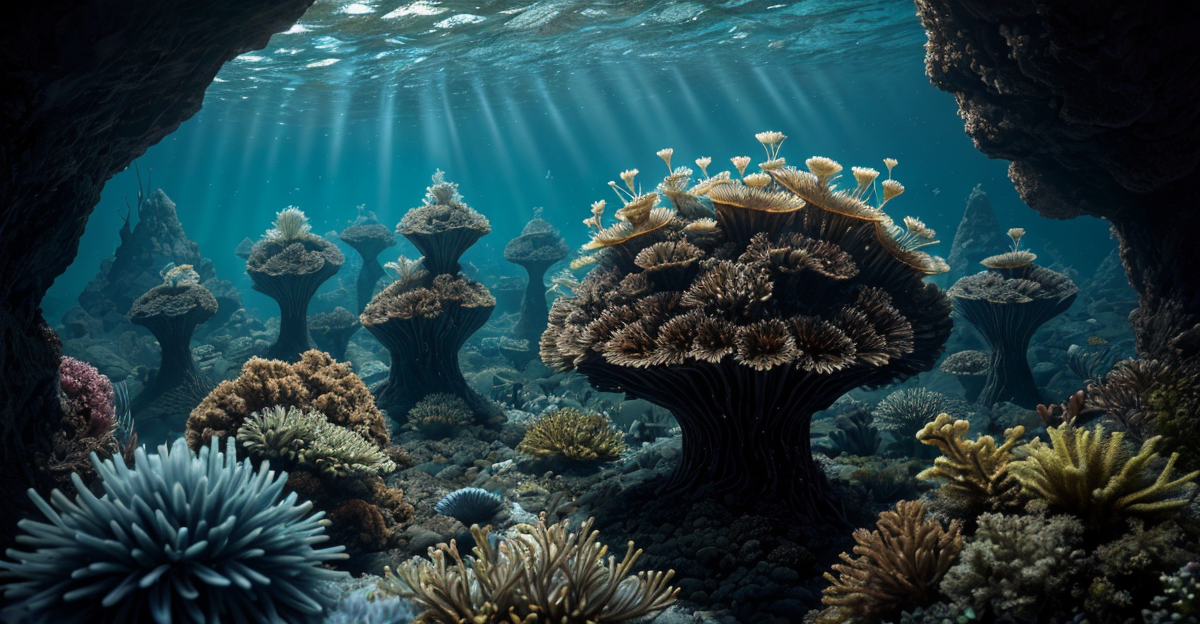
Deep-sea vents: alien life's welcome mat or an exclusive, picky paradise? Quill dives deep to explor
Alright, space cadets, strap in! Quill here, ready to plunge into the abyssal depths and tackle a cosmic question: Could the key to finding alien life be hiding… at the bottom of *our* ocean? We’re talking about deep-sea vents, those underwater geysers spewing chemical cocktails that would make Walter White proud. You might be thinking, “Scorching, toxic sludge? Sounds like an easy win for life!” But hold your seahorses. Deep-sea vents are far more discerning than that. **The Extreme Environment of Deep-Sea Vents: Forget Five-Star Resorts** Imagine the *worst* spa day imaginable. That’s a deep-sea vent. The pressure is so intense, it feels like a thousand elephants doing the Macarena on your chest. Temperatures fluctuate wildly, from near-freezing to a scorching 400°C (750°F) – hot enough to melt lead in seconds! And the water? A toxic brew of hydrogen sulfide, methane, and heavy metals. Bon appétit! (Just kidding. Don’t even think about it.) These are *definitely* not your average beach vibes. Think Mordor, underwater. **Surprisingly Limited Diversity: VIP Section Only** Here’s the surprising part: despite all this, *something* lives there. But it’s no bustling metropolis. We’re mainly talking about chemosynthetic bacteria and archaea. These microscopic maestros form the base of the food chain, drawing energy not from sunlight (which, obviously, doesn’t penetrate the depths) but from oxidizing those nasty chemicals. They’re the ultimate recyclers, transforming poison into power. Then you have the specialized invertebrates – tube worms waving their feathery plumes, clams nestled in the chemical soup, shrimp and crabs scuttling about. But notice anything missing? Goldfish? Nope. Dolphins? Absolutely not. You won’t find any vertebrate party animals down there. It’s a highly exclusive club with a very strict dress code (resistant to extreme toxicity). **Symbiotic Relationships: Tag-Team Survival** So, how do these vent critters survive the underwater apocalypse? Teamwork makes the dream work! Specifically, symbiosis. Take those groovy tube worms, for example. They don’t even have mouths or guts! Instead, they host bacteria *inside* their bodies. The bacteria use chemosynthesis to create food, and the tube worm gets a free, all-you-can-eat buffet. It’s the ultimate co-op living arrangement. Clams do the same thing, and even crabs and shrimp rely on microbial mats – basically, bacterial carpets – for survival. It’s a whole ecosystem built on microscopic roommates and mutually beneficial arrangements. **Vents as a Potential Cradle of Life (on Earth and Beyond): The Origin Story?** Now, things get *really* interesting. Some scientists believe deep-sea vents might be where life on Earth *began*. Consider it: a stable source of chemical energy in the dark, shielded from harmful UV radiation and destructive meteor impacts. Plus, the vent chemistry might have actually facilitated the creation of organic molecules, the very building blocks of life. Forget the primordial soup; maybe it was primordial sludge that got the party started! **Why Vents Aren’t a Universal “Welcome Mat” for Alien Life: Not Just Any Sludge Will Do** But before you start imagining alien tube worms throwing rave parties on Europa, let’s tap the brakes. Just because life *can* exist in these extreme conditions doesn’t automatically mean it *will* wherever there’s a vent. First, the chemical composition has to be *just* right. Not all vents are created equal; they need specific elements and compounds to fuel the chemosynthesis that supports the entire ecosystem. Second, those vent critters have evolved some seriously specialized adaptations over eons. It’s not like any old organism can just stroll in and thrive in that environment. And finally, there’s the “Rare Earth” hypothesis, which suggests that the precise conditions required for life to originate and thrive might be, well, exceptionally rare in the universe. Basically, finding life on another planet is probably going to be even harder than finding a decent parking spot on Black Friday – and require a whole lot more luck. So, what do you think? Are we too Earth-centric in our search for life? Or are we right to assume that life as we know it needs certain conditions to thrive? What kind of alien life do *you* think is out there? Let me know in the comments!



